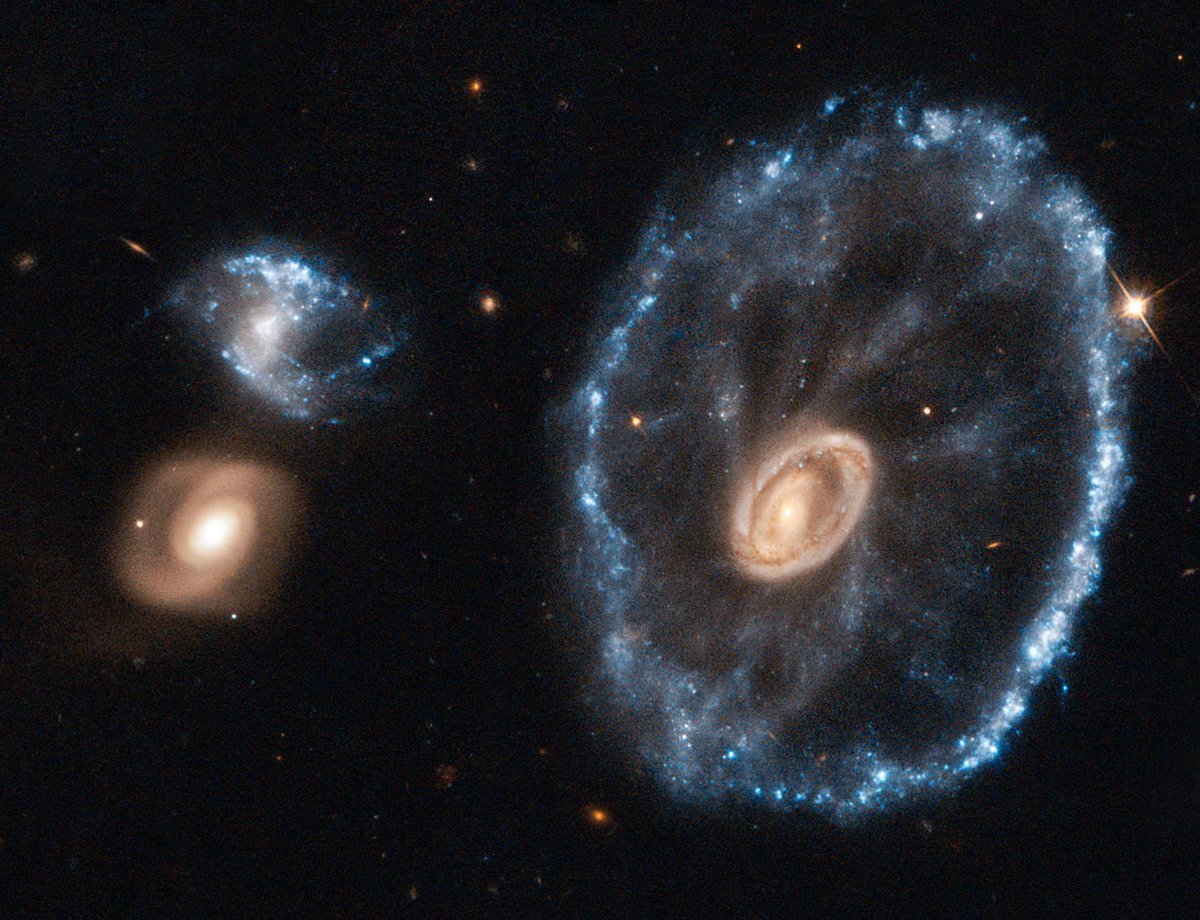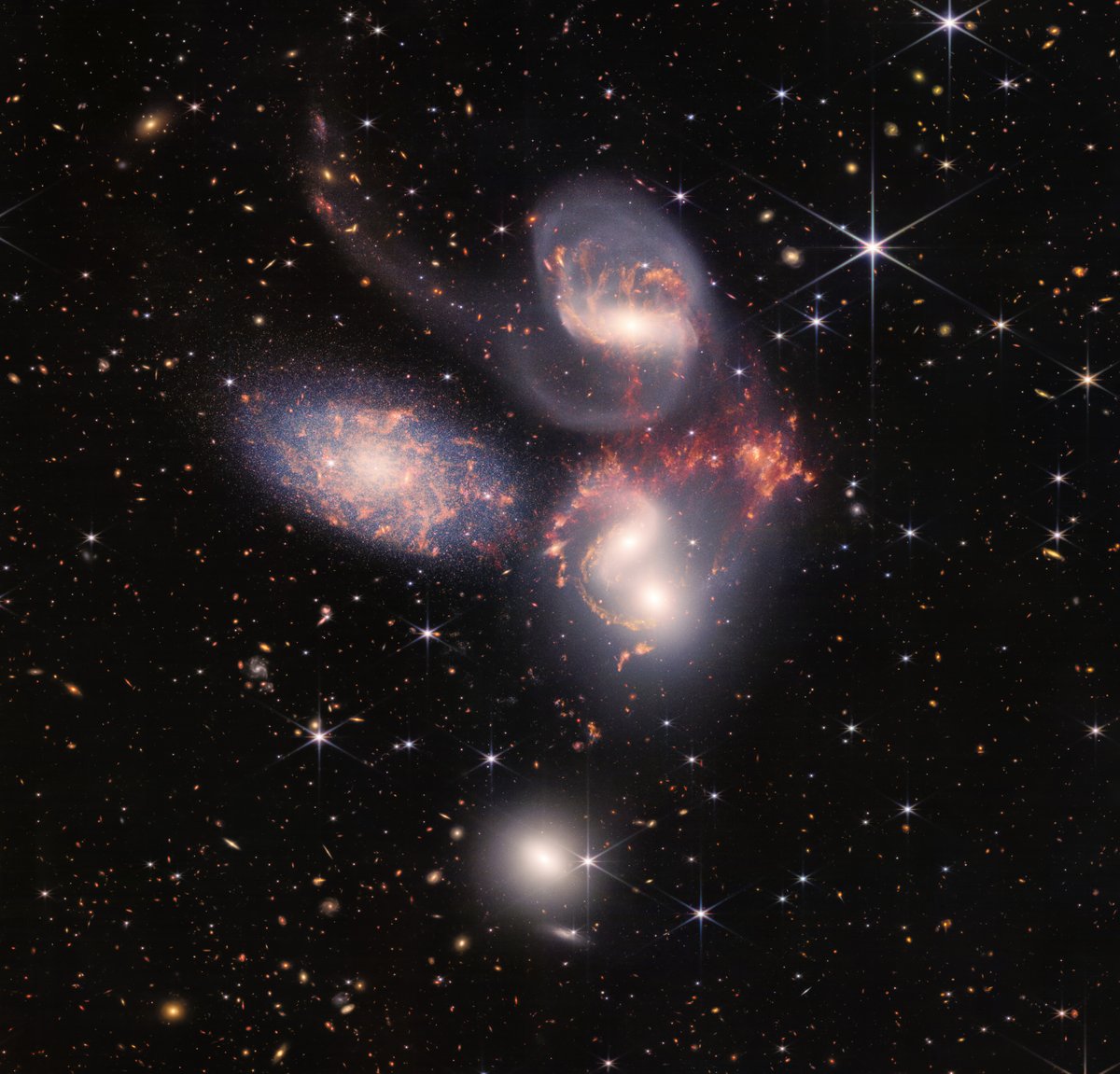
1/ Webb turns its eye close to home by capturing its first image of Neptune, revealing the ice giant planet in a whole new light. This is the clearest view of this peculiar planet’s rings in more than 30 years. Read more:
esawebb.org/news/weic2214/
esawebb.org/news/weic2214/

2/ The new image, taken by Webb’s Near-Infrared Camera (NIRCam), shows the crisp view of the planet’s dynamic rings. The Webb images also clearly show Neptune’s fainter dust bands.
3/ Methane gas found inside Neptune is so strongly absorbing that the planet is quite dark at Webb wavelengths (0.6 to 5 microns) except where high-altitude clouds are present. Such clouds are prominent as bright streaks and spots, which reflect sunlight.
4/ Webb also captured seven of Neptune’s 14 known moons. Dominating this Webb portrait of Neptune is a very bright point of light sporting the signature diffraction spikes seen in many of Webb’s images; it’s not a star, but Neptune’s most unusual moon, Triton. 

5/ Triton reflects an ~70 percent of the sunlight that hits it and orbits Neptune in a backwards orbit, leading astronomers to believe this moon was a Kuiper Belt object that was captured by Neptune. Additional Webb studies of Triton and Neptune are planned this year.
• • •
Missing some Tweet in this thread? You can try to
force a refresh













